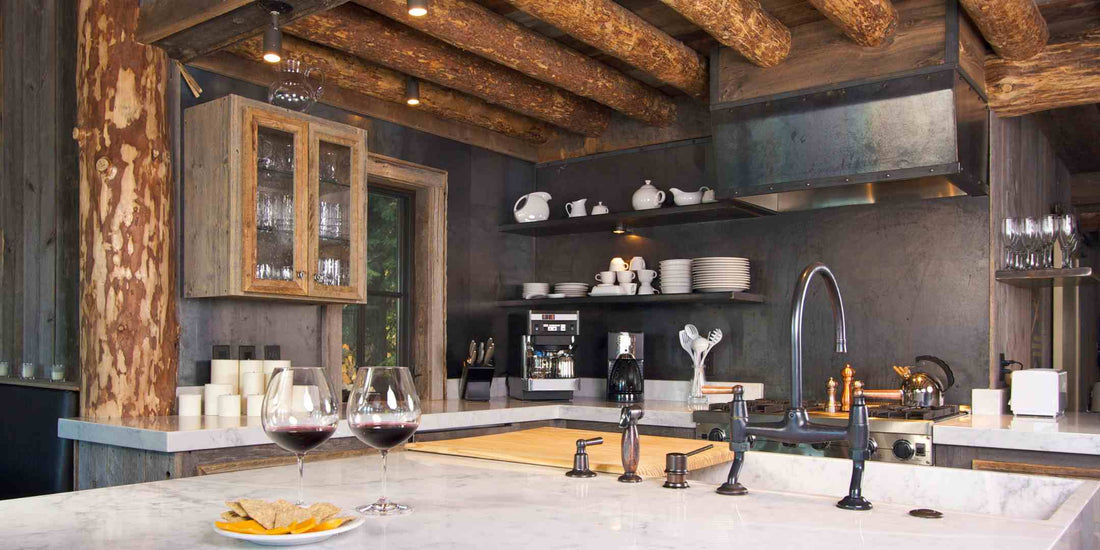
Filipino Rustic Style: Wood Accents and Capiz Touches for a Home That Feels Like Home
Share
There’s a unique charm about stepping into a Filipino home that captivates the senses. It’s a warm, inviting space steeped in stories where Filipino rustic interior design ideas come to life. It's a blend of simplicity, soul, and intelligent design choices, grounded in natural materials, that offer a unique charm hard to resist.
This isn’t your usual Pinterest-worthy rustic. It’s a proudly local take on a classic concept. If you’ve been wondering what Filipino interior design style is or how to integrate native elements with a cozy, timeless vibe, this guide is for you.
What Is Filipino Rustic Style, Anyway?

Take the easy-going charm of rustic interior design style. You know, the one filled with reclaimed wood, rough textures, and a touch of nostalgia, and combine it with the heart and heritage of Filipino culture.
In essence, Filipino rustic interior design ideas are all about:
Wood—in all its glorious forms: narra, acacia, molave
Capiz shells—for that subtle sparkle and coastal character
Handmade crafts—being, rattan, solihiya, woven fabrics
Natural ventilation and light—think expansive windows and open plans
It’s not just about nostalgia. Even in the modern era, Filipino rustic interior design ideas continue to evolve, embracing these elements while adapting them to today’s lifestyles.
1. Wood Accents: From Floors to Ceilings
Wood is the backbone of Filipino rustic design. And we’re not talking about sleek, engineered finishes. We’re talking grainy, lived-in, weathered wood.
Ceiling beams – Exposed wood beams instantly give character and height to your interiors.
Accent walls – Use reclaimed wood planks or carved panels as a statement wall in living rooms or bedrooms.
Furniture – Go for chunky hardwood pieces. A narrow dining table or an antique aparador with hand-carved detailing is a legacy.
Floors – Wide-plank wooden floors in warm tones bring a sense of heritage and comfort.
“Use tung oil or a natural wax finish to enhance the grain of your wood and bring out that rustic richness and keep it low-tox.”
2. Capiz Details: Subtle Sparkle, Timeless Charm
Ah, capiz. Is there anything more iconically Filipino? These pearlescent shells have been used for centuries in windows, lanterns, and decorative items, and they continue to hold up well today.
Capiz windows – Ideal for tropical climates, as they allow in light while diffusing glare.
Pendant lighting – Swap modern chandeliers for capiz shell pendants. They add texture, elegance, and that signature Filipino glow.
Wall décor or trays – Frame capiz panels or use them as stylish serving pieces.
Capiz is surprisingly versatile. Pair it with polished cement, and it sings. Set it against rustic wood, and it hums. It’s the quiet superstar of simple, rustic Filipino interior design ideas, offering a world of design possibilities that can excite any design enthusiast.
3. Native Textures and Patterns
What makes Filipino rustic spaces feel so alive? Texture. Lots of it. From soft woven fabrics to tough-as-nails rattan, there’s a rich mix of surfaces to play with.
Banig mats – Use them as floor rugs or even headboard accents.
Rattan and solihiya – Perfect for chairs, cabinets, and light fixtures.
Woven textiles – Add local flair with inabel or Yakan weaves as throw pillow covers or table runners.
Stone or adobe – Add contrast with rough stone finishes or exposed bricks.
And if you're leaning into modern Filipino rustic interior design ideas, keep the textures but simplify the palette. Stick with neutral linens, pale wood tones, and matte finishes.
4. Airy Layouts, Breezy Windows
Filipino homes, especially older bahay kubo or bahay na bato, were designed for airflow before air-conditioning was even a thing. So, if you're building or remodeling, channel that energy.
Big windows – Louvered, capiz, or even wooden slatted designs
Open plans – Living, dining, and kitchen in one breathable space
Cross ventilation – Strategically placed windows or ventanillas for the breeze to pass through
If you’re concerned about security, consider using metal grilles with intricate Filipino patterns.
5. Earth-Toned Palette with a Tropical Twist
Stick with warm, earthy tones like tan, terracotta, burnt sienna, and olive green. Then sprinkle in tropical hues like indigo, mustard yellow, or even calamansi green if you’re feeling bold.
Walls – Off-white or pale beige lets the wood and décor stand out.
Accents – Try deep greens (ala mango leaves) or rust tones inspired by clay pottery.
Plants – Opt for local greenery, such as sansevieria, ferns, or bougainvillea, in clay pots.
6. Sentimental and Sustainable
Filipino rustic design is inherently sustainable. It values what’s already there. It’s designed with heart and heritage, instilling a sense of responsibility and consciousness in the design process.
Upcycle – Turn old ventanillas into wall art. Use wood crates as nightstands.
Local sourcing – Support local carpenters, weavers, and artisans.
Minimal waste – Salvage old wood or stone whenever possible.
Embrace the Soul of Filipino Design

If you’re still wondering what the rustic interior design style is or what the Filipino interior design style is, here’s the short version:
Rustic is warm, raw, and real. Filipino style is soulful, layered, and deeply personal. Blend the two, and you get spaces that don’t just look beautiful, but feel like home.
Filipino rustic interior design ideas aren’t about copying a look. They’re about honoring what’s already around you. The textures, the climate, the crafts, the stories—they’re all part of the palette.
So bring in the wood. Let the capiz sparkle. And build a home that reflects the best parts of being Filipino: creative, resilient, rooted, and proud.
